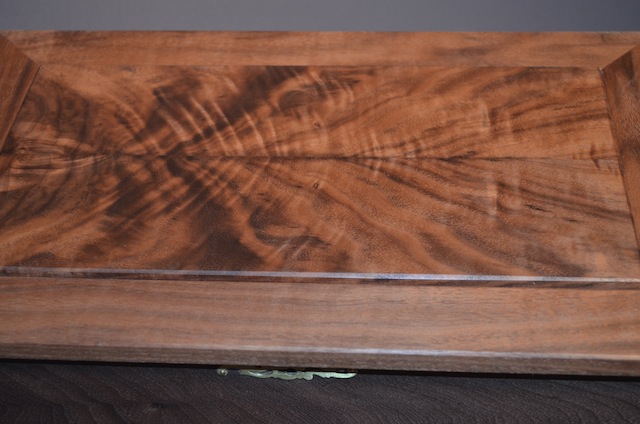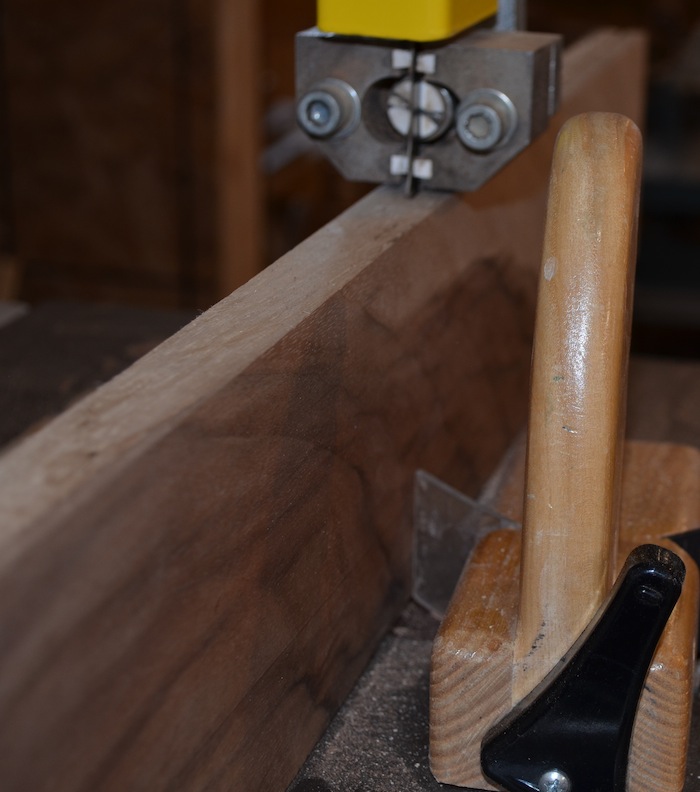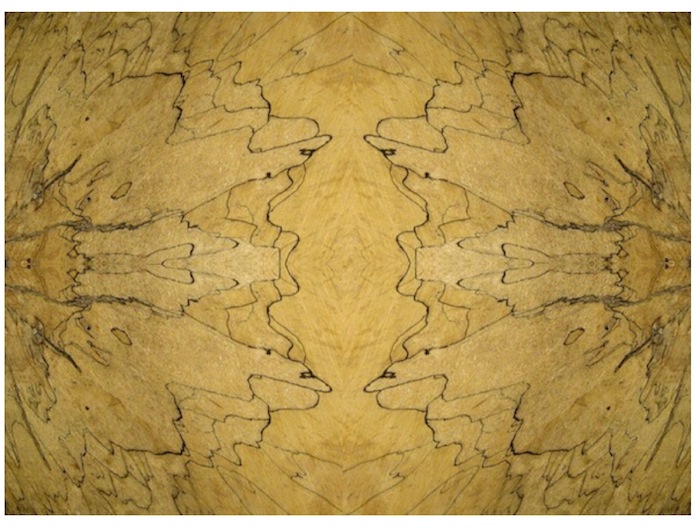Book matching is the process of cutting a board through its thickness, then folding the two boards open as if opening a book. This gives a mirror image of the grain pattern. It’s an easy way to get fascinating grain designs and all it takes is an interesting board and a way to resaw.
Read on to learn how to create book matched veneer.

Photos via wooden-box-maker.com
Resawing on the bandsaw

I usually resaw on my bandsaw. I set up a fence and make sure to use a sharp blade.
A couple of things to keep in mind before resawing:
1. Adjust the bearings or blocks properly to keep the blade from fluttering during the cut. Check your manual on how this is done as different saws have different adjustments.
2. Check for “drift” before beginning. Since a bandsaw blade is flexible, it is hard to keep the fence parallel to the blade after you release the tension or change a blade, so it is important to check that the adjustment hasn’t “drifted.” To do this, mark a straight line along a piece of scrap wood and set your fence to take off the mark. Run the wood along the fence and see if your cut goes astray. If it does, adjust the fence until you can cut straight along the line.

3. If you have a fence that can tilt, check that the table is square to the blade (I spent an embarrassing amount of time recently trying to figure out why my cuts were all coming out angled, before I thought to check the table).
4. Use the right blade. I like to use a 1/2″ or larger hook tooth blade for these cuts. Read more about different bandsaw blades here.
Resawing on a table saw
If you don’t have a bandsaw, you can also resaw on the table saw.
You will need to take several passes unless you are cutting through thin material. I do a shallow cut, flip the board (being careful to keep the same side against the fence) and make a second cut, then raise the blade and repeat as many times as needed. Be careful not to take off too much material at one time or you can burn your board. A feather board is very useful and a push stick is required. A riving knife makes the whole process much safer.
When deciding which tool to use, keep in mind what you need for the depth of cut (a table saw can cut a board twice the height of your blade, usually 5” max, while a bandsaw is usually able to take off a good deal more). Also, a table saw has a thicker blade, so you will waste more material with each pass.
Book matched results of resawing
Resawing is fun because while I might have an idea of what my board will look like, it’s never exactly as I imagine.
You can make boards that are whimsical:

Formal:

Subtle:

Or just plain outrageous:

You can also make more than one set of book matched patterns. This is especially popular if you are cutting your wood into veneers. You can make different designs by moving the veneers around.

 Before you know it, you will be picking through the burn pile for the “worst” wood for the “best” grains.
Before you know it, you will be picking through the burn pile for the “worst” wood for the “best” grains.

Share tips, start a discussion or ask one of our experts or other students a question.
No Responses to “How to Create Book Matched Wood Patterns”